Gender-role attitudes (ISSP 94)
- Messinstrument
- Dokumentation
- Zitieren
- Nutzungsbedingungen
- Standardlizenz
- Zur Nutzung für andere Zwecke
kontaktieren Sie die Autor*innen
Instruction
|
English |
German |
|
To begin, we have some questions about women. Do you agree or disagree" |
Wir möchten mit ein paar Fragen zur Berufstätigkeit von Frauen beginnen. Wie ist Ihre Meinung zu den folgenden Aussagen? |
Items
The gender-role battery which is located at the beginning of the 'Family and Changing Gender Roles' module is asked in the following way. Arabic numbers indicate the sequence of the items in the battery; dimension labels and recoding instructions are introduced here for convenience, only, they were not part of the questionnaire!
C = Consequence dimension
G = Gender-role ideology dimension
E = Economic consequences dimension
A part of the items has been used in the ALLBUS surveys, too.
|
Nr. |
English |
German |
Polarity |
Dimension |
|
1 |
A working mother can establish just as warm and secure a relationship with her children as a mother who does not work. |
Eine berufstätige Mutter kann ein genauso herzliches und vertrauensvolles Verhältnis zu ihren Kindern finden wie eine Mutter, die nicht berufstätig ist. |
- |
C |
|
2 |
A pre-school child is likely to suffer if his or her mother works. |
Ein Kind, das noch nicht zur Schule geht, wird wahrscheinlich darunter leiden, wenn seine Mutter berufstätig ist. |
+ |
C |
|
3 |
All in all, family life suffers when the woman has a full-time job. |
Alles in allem: Das Familienleben leidet darunter, wenn die Frau voll berufstätig ist. |
+ |
C |
|
4 |
A job is alright, but what most women really want is a home and children. |
Einen Beruf zu haben ist ja ganz schön, aber das, was die meisten Frauen wirklich wollen, sind ein Heim und Kinder. |
+ |
G |
|
5 |
Being a housewife is just as fulfilling as working for pay. |
Hausfrau zu sein ist genauso erfüllend, wie gegen Bezahlung zu arbeiten. |
+ |
G |
|
6 |
Having a job is the best way for a woman to be an independent person. |
Einen Beruf zu haben ist das beste Mittel für eine Frau, um unabhängig zu sein. |
- |
E |
|
7 |
Most women have to work these days to support their families. |
Die meisten Frauen müssen heutzutage arbeiten, um ihre Familie zu unterstützen. |
- |
E |
|
8 |
Both the man and woman should contribute to the household income. |
Der Mann und die Frau sollten beide zum Haushaltseinkommen beitragen. |
- |
E |
|
9 |
A man's job is to earn money; a woman's job is to look after the home and family. |
Die Aufgabe des Mannes ist es, Geld zu verdienen, die der Frau, sich um Haushalt und Familie zu kümmern. |
+ |
G |
|
10 |
It is not good if the man stays at home and cares for the children and the woman goes out to work. |
Es ist nicht gut, wenn der Mann zuhause bleibt und sich um die Kinder kümmert und die Frau außer Haus berufstätig ist. |
+ |
G |
|
11 |
Family life often suffers because men concentrate too much on their work. |
Das Familienleben leidet oft, weil Männer sich zu sehr auf ihre Arbeit konzentrieren. |
+ |
C |
Response specifications
5-point rating scales (1: strongly agree/ stimme voll und ganz zu, 2: agree/ stimme zu, 3: neither agree nor disagree/ weder noch, 4: disagree/ stimme nicht zu and 5: strongly disagree/ stimme überhaupt nicht zu). In addition a "Can´t choose/ (Kann ich nicht sagen” option was offered.
Scoring
Recommendation: In order to construct truely comparable measures some problematic items should be eliminated from the respective indices. It has to be emphasized that the decision to include or exclude items from an index should be made dependent on the countries being compared. This leads, at least for the comparison of the two Germanys and the United States, to the following measures:
|
Nr. |
Item |
Dimension |
|
2 |
A pre-school child is likely to suffer if his or her mother works. |
C |
|
3 |
All in all, family life suffers when the woman has a full-time job. |
C |
|
4 |
A job is alright, but what most women really want is a home and children. |
G |
|
9 |
A man's job is to earn money; a woman's job is to look after the home and family. |
G |
|
8 |
Both the man and woman should contribute to the household income. |
E |
If only these recommended items are used, a recoding is necessary for item 8 of the economic consequences dimension, only. If all items are used, recoding is absolutely necessary for item 1, but has been done here for items 6 and 7, too (despite the fact that a theoretical justification is not straightforward).
Due to their importance for any society, gender-role attitudes have been included in surveys of special groups and the entire population for several decades. In the 60ies when the first items were constructed in the United States, it was felt that the benefits to women coming from the traditional gendered division of labor has been rapidly declining (Mason, Czajka & Arber, 1976). The rise in returns for female labor on the market, the decline in desired, and actual, family size and the rise of divorce rates have increased costs for a traditional home-maker role. In accordance to the changed opportunity structure, behavior of women changed, too: Inequalities between both genders in educational attainment were markedly reduced and female labor-force participation rose. At roughly the same time the women's movement led to a public discussion of the role of women. The question was then whether the changed opportunity structure for women, their changed behavior and the women's movement had also produced changes in attitudes which could then function as an additional driving force towards less-traditional gender roles.
As the most dramatic change in the area of the family and gender roles in the 60ies occurred with the behavior of women - while there was perceived no need to change for men and no actual change of their behavior was observed or even conceived to be possible - it comes at no surprise that most items designed to measure gender-role attitudes in that decade focussed on women, too.
Itemgeneration and -selection
Attitudes of the kind considered here have been measured in national general social surveys on a regular basis for several years. The American General Social Survey (GSS, see Davis & Smith, 1996, http://www.norc.org/GSS+Website/) has used the same 4-item battery since 1977, when it was adapted from other American studies on special groups (Mason & Bumpass, 1975; Mason, Czajka, & Arber, 1976; Thornton & Freedman, 1979). The German ALLBUS adopted the GSS battery in 1982 and added two items (5 and 6), the British Social Attitudes Survey also took up the American measure in 1984 and, finally, the Polish General Social Survey (http://www.icpsr.umich.edu/icpsrweb/ICPSR/series/00185) introduced this measure in 1992.
The GSS measure for gender-role attitudes takes into consideration two theoretically discernible dimensions which could be labeled "consequences (of female labor-force participation for the family)" and "gender-role ideology". Gender-role ideology in the sense used here refers to the beliefs about the "nature" of the woman (and - to some degree - man) and what women "really" want. Both dimensions were thought to be related in the sense that, if maternal employment was seen as detrimental for the children, then there would be a strong argument for the traditional division of labor between both genders.
The GSS/ALLBUS measure was then used as the basis for constructing a gender-role battery in the 1988 study of the International Social Survey Program (ISSP, see Braun, 1994) on "Family and Changing Gender Roles" (Zentralarchiv, 1991). However, the response scale was changed as was the phrasing of some items, and the number of items was fairly enlarged. ISSP 1988 includes an additional dimension which relates to the "economic consequences (of female work)". The items asked in the ISSP 1988 study are:
- A working mother can establish just as warm and secure a relationship with her children as a mother who does not work.
- A pre-school child is likely to suffer if his or her mother works.
- All in all, family life suffers when the woman has a full-time job.
- A woman and her family will all be happier if she goes out to work (dropped in 1994).
- A job is alright, but what most women really want is a home and children.
- Being a housewife is just as fulfilling as working for pay.
- Having a job is the best way for a woman to be an independent person.
- Both the husband and the wife should contribute to the household income.
- A husband's job is to earn money; a wife's job is to look after the home and family.
In the gender-role battery of ISSP 1994 (Zentralarchiv, 1997), which is documented here on the basis of data from East and West Germany and the United States, one item of the 1988 battery was dropped and three added: one for the economic consequences dimension and one item relating to the role of men for each of the two other dimensions.
Samples
The gender-role battery was administered in 1994 in 24 countries. In each, random samples of the adult population were used. Sample sizes range from 647 for Northern Ireland to 2.494 in Spain (see detailed descriptions for the single countries in Zentralarchiv 1997). For the US 1.447 cases were obtained, for West and East Germany 2.324 and 1.097 cases respectively. The distribution of the three samples with regard to education, age and gender are reported in Table 1. Education has been recoded in the following way
a) for Germany: lower secondary education (Hauptschulabschluss) or less, intermediary secondary education (Mittlere Reife and Fachhochschulreife), and upper secondary education (Abitur) and more and
b) for the United States: less than High School, High School, more than High School.
The questionnaire was designed in a format that allows for self-completion. In some countries, however, the information was gathered in a personal interview. In both the US and Germany the ISSP module was administered as a drop-off after the national GSS had been administered as a personal interview.
Education, age and gender of the West- (WG) and East-Germany (EG) and the United States (US) sample
|
Education |
|
WG |
EG |
US |
Sum |
|
Low |
N |
1234 |
459 |
253 |
1946 |
|
|
% |
53.5 |
42.2 |
17.5 |
40.2 |
|
Medium |
N |
632 |
426 |
750 |
1808 |
|
|
% |
27.4 |
39.2 |
51.9 |
37.4 |
|
High |
N |
439 |
203 |
441 |
1083 |
|
|
|
19.1 |
18.7 |
30.5 |
22.4 |
|
Sum |
|
2305 |
1088 |
1444 |
4837 |
|
AGE Groups |
|
|
|
|
|
|
18-29 |
N |
517 |
198 |
250 |
965 |
|
|
% |
22.3 |
18.1 |
17.3 |
19.9 |
|
30-39 |
N |
491 |
202 |
367 |
1060 |
|
|
% |
21.1 |
18.4 |
25.4 |
21.8 |
|
40-49 |
N |
373 |
201 |
307 |
881 |
|
|
% |
16.1 |
18.3 |
21.3 |
18.1 |
|
50-59 |
N |
427 |
229 |
185 |
841 |
|
|
% |
18.4 |
20.9 |
12.8 |
17.3 |
|
60-69 |
N |
298 |
154 |
145 |
597 |
|
|
% |
12.8 |
14.1 |
10.0 |
12.3 |
|
70+ |
N |
216 |
112 |
189 |
517 |
|
|
% |
9.3 |
10.2 |
13.1 |
10.6 |
|
Sum |
|
2322 |
1096 |
1443 |
4861 |
|
Sex |
|
|
|
|
|
|
Male |
N |
1198 |
528 |
596 |
2322 |
|
|
% |
51.5 |
48.1 |
41.2 |
47.7 |
|
Female |
N |
1126 |
569 |
851 |
2546 |
|
|
% |
48.5 |
51.9 |
58.8 |
52.3 |
|
Sum |
|
2324 |
1097 |
1447 |
4868 |
Note. Computations were conducted with SPSS 8.0
Dimensionality
The results of factor analyses for the gender-role battery for the three countries are presented in Table 2 as well as the MDS-results of the intercorrelations of the gender-role items for West Germany in Figure 1, East Germany in Figure 2 and the United States in Figure 3. Both methods lead to roughly comparable conclusions.
Factorloadings and total variance explained according to principal component analyses (Oblimin
with Kaiser normalization) for West-Germany (WG, N = 1665), East-Germany (EG, N = 900) and
United States (US, N = 1255)
|
|
1 Consequences |
2 Gender role ideology |
3 Economic consequences |
||||||
|
|
WG |
EG |
US |
WG |
EG |
US |
WG |
EG |
US |
|
1 Warm relation |
.510 |
.548 |
.778 |
.048 |
.127 |
-.173 |
.419 |
.477 |
.258 |
|
2 Child suffers |
.635 |
.774 |
.767 |
.327 |
-.098 |
.108 |
.032 |
.066 |
.095 |
|
3 Family suffers |
.566 |
.755 |
.738 |
.393 |
-.114 |
.201 |
.088 |
.118 |
.069 |
|
4 Children better |
-.057 |
.084 |
.223 |
.847 |
-.779 |
.697 |
-.068 |
-.077 |
-.116 |
|
5 Housework as fulfilling |
-.068 |
-.068 |
-.235 |
.714 |
-.811 |
.766 |
.053 |
.075 |
.309 |
|
6 Independence |
-.158 |
-.206 |
-.200 |
.138 |
-.274 |
.160 |
.650 |
.652 |
.728 |
|
7 Support |
-.048 |
-.077 |
.130 |
-.206 |
.077 |
-.061 |
.710 |
.670 |
.635 |
|
8 Double income |
.121 |
.126 |
.264 |
.023 |
-.023 |
.023 |
.724 |
.699 |
.695 |
|
9 Household w´s job |
.062 |
.145 |
.401 |
.805 |
-.702 |
.597 |
.061 |
.149 |
.018 |
|
10 Men home not good |
.079 |
.301 |
.336 |
.681 |
-.042 |
.459 |
-.095 |
-.075 |
-.203 |
|
11 Men work too much |
.674 |
.457 |
.383 |
-.171 |
-.061 |
.063 |
-.169 |
-.180 |
-.122 |
|
% variance explained |
10.4 |
27.2 |
31.5 |
30.2 |
9.8 |
9.8 |
14.5 |
14.0 |
14.2 |
Note. Computations were conducted with SPSS 8.0
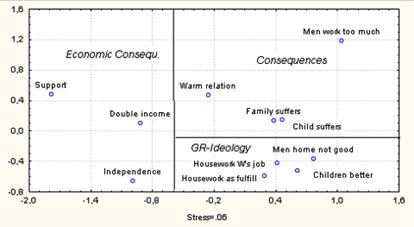
Figure 1. MDS representation of the Gender-role Items: West Germany
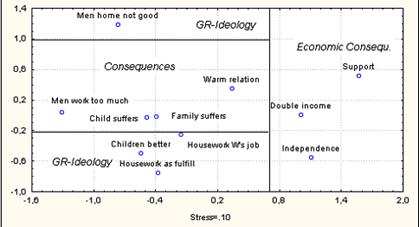
Figure 2. MDS representation of the Gender-role Items: East Germany
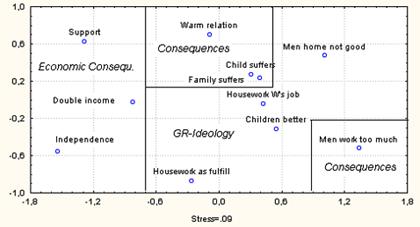
Figure 3. MDS representation of the Gender-role Items: United States
Item parameter
In addition to the results of factor analyses in Table 2 the "Cronbachs Alpha if item deleted" and the "Corrected Item Total Correlations" are presented in Table 3 for the 11 Items of the gender-role battery for each of the three countries.
Cronbach’s Alpha (CA) and test-item-correlations (rit) of the items for West Germany (WG, N = 1665), East Germany (EG, N = 900) and United States (US, N = 1255)
|
|
WG |
EG |
US |
|||
|
|
CA |
rit |
CA |
rit |
CA |
rit |
|
1 Warm relation |
.72 |
.37 |
.67 |
.36 |
.74 |
.47 |
|
2 Child suffers |
.70 |
.51 |
.64 |
.50 |
.72 |
.60 |
|
3 Family suffers |
.70 |
.55 |
.64 |
.54 |
.71 |
.64 |
|
4 Children better |
.70 |
.52 |
.65 |
.46 |
.73 |
.48 |
|
5 Housework as fulfilling |
.71 |
.47 |
.66 |
.44 |
.75 |
.34 |
|
6 Independence |
.74 |
.22 |
.70 |
.19 |
.78 |
.13 |
|
7 Support |
.76 |
.04 |
.70 |
.09 |
.76 |
.20 |
|
8 Double income |
.73 |
.29 |
.69 |
.27 |
.75 |
.37 |
|
9 Household w´s job |
.68 |
.63 |
.64 |
.56 |
.72 |
.62 |
|
10 Men home not good |
.71 |
.45 |
.71 |
.15 |
.75 |
.39 |
|
11 Men work too much |
.75 |
.10 |
.70 |
.21 |
.76 |
.22 |
|
All Items |
.74 |
|
.70 |
|
.76 |
|
Note. The computations were conducted with SPSS 8.0
Reliability
Cronbach’s Alpha for the three dimensions "Consequences", "Gender role ideology", and "economic consequences" and the entire item set are presented in Table 4 for the three countries.
Cronbach’s Alpha (CA) for the three dimensions and all items for West Germany (WG), East Germany (EG) and the United States (US)
|
|
number of items |
WG |
EG |
US |
|
1 Consequences |
4 |
.59 |
.78 |
.52 |
|
2 Gender Role Ideology |
4 |
.63 |
.60 |
.51 |
|
3 Economic consequences |
3 |
.72 |
.69 |
.53 |
|
All Items |
|
.74 |
.70 |
.76 |
Note. The computations were conducted with SPSS 8.0
Validity
The problem of validity is central to all survey research. However, it becomes even more important as comparisons over time and across countries are at stake.
The gender-role items have been criticized for a variety of reasons. They are phrased according to a traditional role of the woman that is increasingly less common in industrial countries. Thus, the questions are less and less accepted by respondents. Moreover, important differentiations cannot be reflected in the data (see Braun, Scott & Alwin, 1994). If elements of an item do not match relevant aspects of the social or economic reality of a country and, therefore, are incongruent with the experiences of respondents, items may be even completely misunderstood. Additional complications arise when there is a need to translate questionnaires for intercultural research.
The following problems are known to be connected to the items, at least in internationally comparative research. Depending on the countries to be compared the problematic items should be excluded in any index construction (It is always wise to check item functioning in different countries before constructing indices!).
A. Consequences
The dependency of the items of the consequence dimension on age in the three countries is presented in Figure 4.
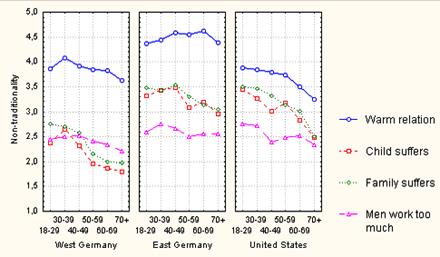
Figure 4. Items of the Consequences Dimension
1. "A working mother can establish just as warm and secure a relationship with her children as a mother who does not work."
In some countries it seems to be understood in terms of the emotional needs of the child (e.g. all Anglo-Saxon countries), in others of the capabilities of the mother (e.g. all countries with German language). Note the different distances between the curve for this item and the CHILD SUFFERS/FAMILY SUFFERS items in Figure 4. For comparisons across these groups of countries the inclusion of this item can therefore not be recommended.
2. "A pre-school child is likely to suffer if his or her mother works."
3. "All in all, family life suffers when the woman has a full-time job."
At least on the surface these items work also in international comparisons. However, it has to be noted that people in different countries might think of different situations when answering these items, especially with regard to (1) the age of the child (2) the number of hours worked by the mother and (3) the role of the father.
11. "Family life often suffers because men concentrate too much on their work."
This item seems to be answered in the sense of the importance of the father for the children. It produces only small differences between countries and between age groups. Note the similar curves for this item in Figure 4. The inclusion of this item can therefore not be recommended even for merely national analyses.
B. Gender-ideology dimension
The dependency of the items of the gender-role ideology dimension on age for the three countries is presented in Figure 5.
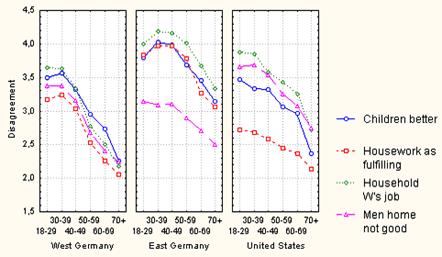
Figure 5. Items of the Gender-role Ideology Dimension
5. "Being a housewife is just as fulfilling as working for pay."
This item is often treated by respondents not as an attitudinal, but a perceptional item. There is some evidence to expect that even for non-traditional respondents this item will converge to the middle point of the scale ('it depends' on the woman, the job opportunities and the workload in the household). In some countries (e.g. the Anglo-Saxon countries) it already works differently from the other items of this dimension. Note the different distances in Germany and the United States between the curve for this item and the CHILDREN BETTER and HOUSEWORK W's JOB items in Figure 5. The inclusion of this item in an index, in particular for comparisons across different groups of countries, can therefore not be recommended.
10. "It is not good if the man stays at home and cares for the children and the woman goes out to work."
The item can be agreed with out of two opposite reasons: either because it should be the woman who stays at home or because both should work. As the distribution of these reasons differ by country. Note the different distances in East and West Germany between the curve for this item and the CHILDREN BETTER and HOUSEWORK W's JOB items in Figure 5. The inclusion of this item can therefore not be recommended for international comparisons.
C. Economic consequences of (female) labor-force participation
The dependency of the items of the economic consequences dimension in the three countries is presented in Figure 6. Note the small age dependency of these item and the similarity between countries.
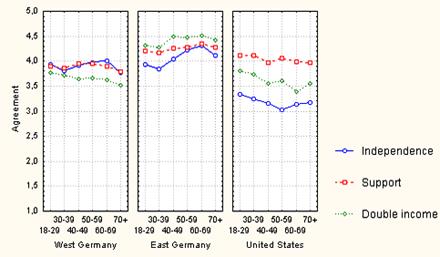
Figure 6. Items of the Economic Consequences Dimension
6. "Having a job is the best way for a woman to be an independent person."
There are several possibilities how responses to this item are generated (opposition to independence of women; job as necessary, but not sufficient for independence; job as sufficient, but not necessary for independence). It is therefore unclear how responses should be interpreted. In addition, this item is only weakly related to the others of this dimension. The inclusion of this item into an index can therefore not be recommended.
7. "Most women have to work these days to support their families."
This is clearly a perceptional and not an attitudinal item. In addition, this item is only weakly related to the others of this dimension. The inclusion of this item into an index can therefore not be recommended.
Recommendation: The conclusion of the methodological considerations seems to be that in order to construct truely comparable measures the problematic items should be eliminated from the respective indices. It has to be emphasized again that the decision to include or exclude items from an index should be made dependent on the countries being compared. This leads, at least for the comparison of the two Germanys and the United States, to the following measures:
|
Nr. |
Item |
Dimension |
|
2 |
A pre-school child is likely to suffer if his or her mother works. |
C |
|
3 |
All in all, family life suffers when the woman has a full-time job. |
C |
|
4 |
A job is alright, but what most women really want is a home and children. |
G |
|
9 |
A man's job is to earn money; a woman's job is to look after the home and family. |
G |
|
8 |
Both the man and woman should contribute to the household income. |
E |
If only these recommended items are used, a recoding is necessary for item 8 of the economic consequences dimension, only. If all items are used, recoding is absolutely necessary for item 1, but has been done here for items 6 and 7, too (despite the fact that a theoretical justification is not straightforward).
Descriptive statistics
The means and standard deviations of the items are provided for the three countries in Table 5.
Means (M) and standard deviations (SD) of the items for West Germany (WG), East Germany (EG) and United States (US)
|
|
WG |
EG |
US |
||||||
|
|
M |
SD |
N |
M |
SD |
N |
M |
SD |
N |
|
1 Warm relation |
3.89 |
1.20 |
2238 |
4.50 |
.83 |
1073 |
3.71 |
1.21 |
1425 |
|
2 Child suffers |
2.23 |
1.11 |
2239 |
3.26 |
1.22 |
1058 |
3.09 |
1.25 |
1417 |
|
3 Family suffers |
2.44 |
1.21 |
2246 |
3.35 |
1.21 |
1070 |
3.23 |
1.25 |
1426 |
|
4 Children better |
3.18 |
1.28 |
2130 |
3.74 |
1.17 |
1048 |
3.16 |
1.16 |
1394 |
|
5 Housework as fulfilling |
2.82 |
1.33 |
2133 |
3.71 |
1.20 |
1047 |
2.54 |
1.11 |
1378 |
|
6 Independence |
3.91 |
1.00 |
2208 |
4.07 |
1.00 |
1059 |
3.19 |
1.14 |
1408 |
|
7 Support |
3.90 |
.93 |
2215 |
4.25 |
.77 |
1063 |
4.04 |
.85 |
1423 |
|
8 Double income |
3.68 |
1.04 |
2197 |
4.41 |
.71 |
1086 |
3.64 |
.96 |
1395 |
|
9 Household w´s job |
3.15 |
1.32 |
2263 |
3.96 |
1.01 |
1079 |
3.54 |
1.15 |
1414 |
|
10 Men home not good |
2.98 |
1.35 |
2207 |
2.95 |
1.32 |
1039 |
3.41 |
1.15 |
1405 |
|
11 Men work too much |
2.43 |
.99 |
2144 |
2.61 |
1.05 |
1018 |
2.56 |
.98 |
1387 |
Note. Computations were conducted with SPSS 8.0
Michael Braun, Dr. rer. pol., GESIS, P.O. Box 12 21 55, 68072 Mannheim. E-Mail: michael.braun@gesis.org, Tel. 0621 1246 176
The scale was used in following studies:
- Eurobarometer in der Schweiz und ISSP 2002


